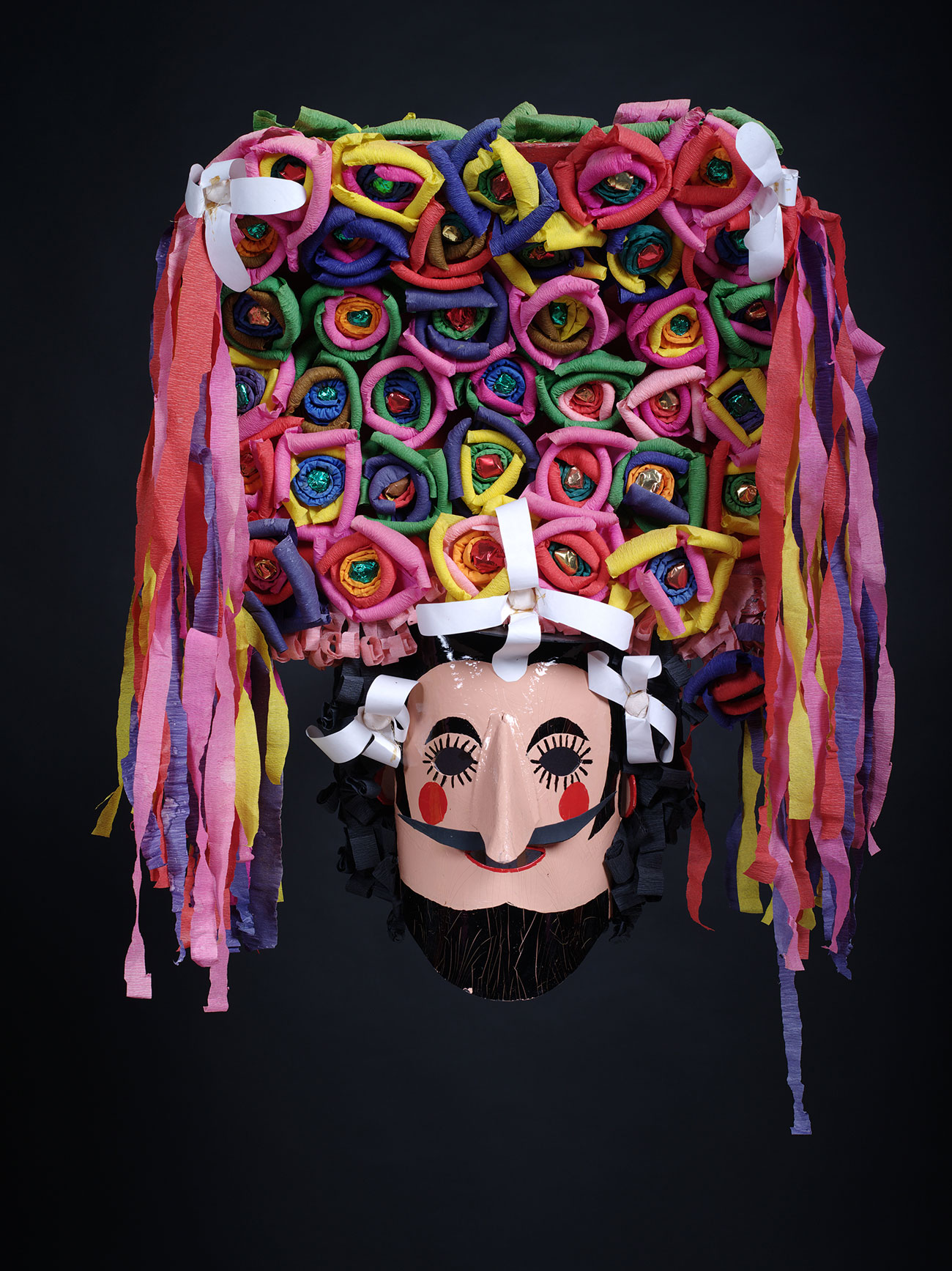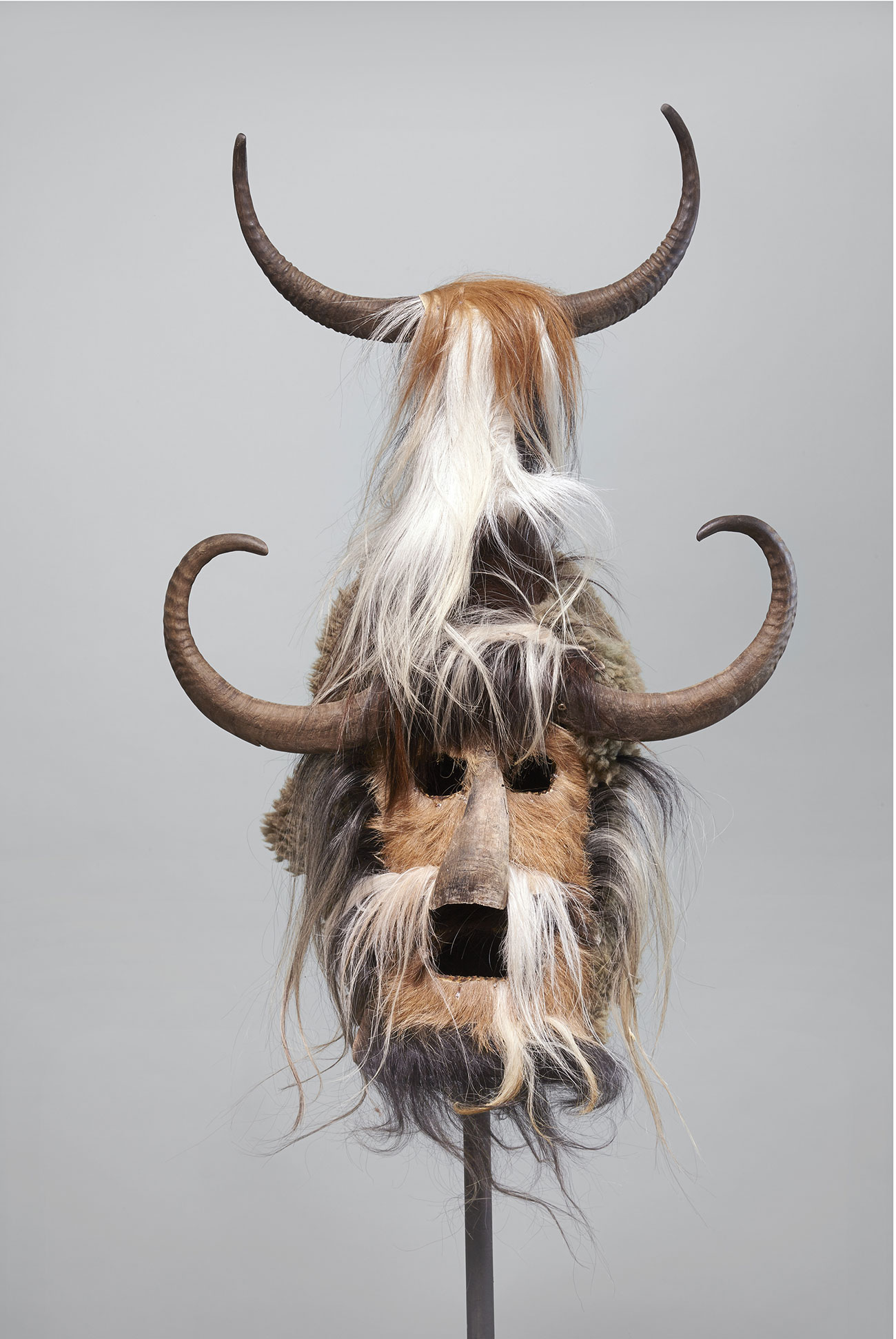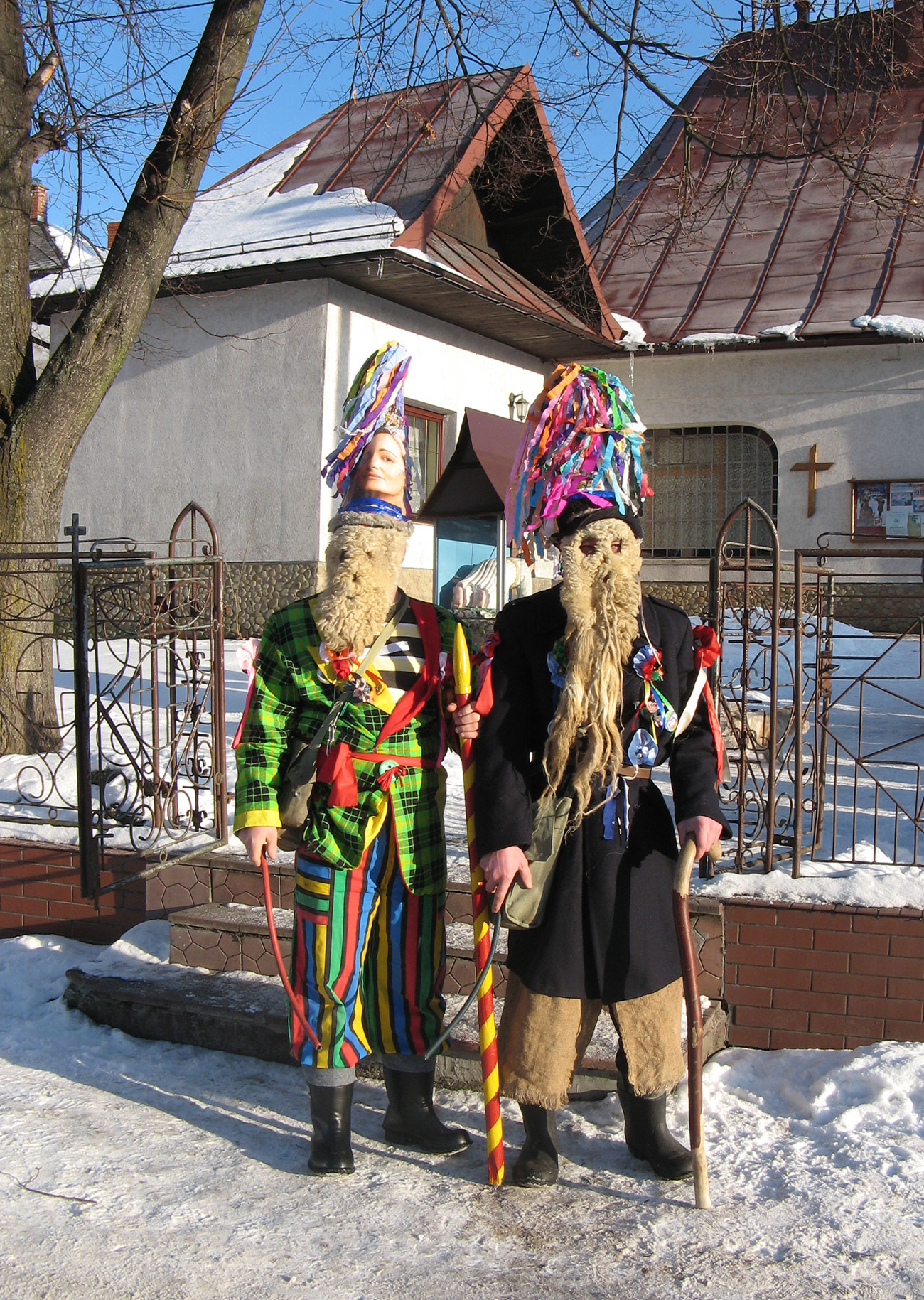The topsy-turvy world
Carnivals and masquerades in Europe and the Mediterranean




In the 1960s, it was thought that one could predict the death of the carnival, reduced to a childish party or a folkloric show. In the end, this is not the case. Fifty years later, the carnival is doing quite well. Everywhere, rural masquerades and urban parades are reborn and reinvented, seeking to reconnect with ancient rites or taking inspiration from forms returning from far away.
The phenomenon has become so widespread that the Mucem engaged in a “survey-collection” initially intended to enrich its collections. Given the quality of the search results, it was decided to organise an exhibition entitled “The Topsy-Turvy World” devoted to contemporary carnivalesque practices.
What is the carnival?
Today very different events are grouped under this name :
— Urban parades, linked or not to the liturgical calendar, ancient or recently invented.
— Ritual masquerades of winter, sometimes starting with All Saints’ Day, characterise the 12-day period, Epiphany or “fat days” before lent. Revisited, these masked rites are now experiencing a widespread resurgence.
— Tropical carnivals enjoy worldwide success. They fascinate the Europeans who go there and are practiced in Europe as celebrations of identity by immigrants originating from the Caribbean or South America.
— Masked rites of the southern shore of the Mediterranean: masquerades of Eid-al-Kabir and Ashura in the Berberspeaking areas of Morocco, Berber New Year (Yennayer) in Kabyle-speaking Algeria, Jewish Purim. The Berber masquerades integrated into the Islamic lunar calendar are now experiencing a revival as pre-Islamic Berber celebrations and are sometimes transformed into urban carnivals, as in Inezgane, in the region of Agadir. Like the parades of Purim in Israel, the current Moroccan carnivals are part of the global carnival culture, which mixes transgressive behaviour, street art, assertions of identity and the jubilation of participating in the celebration.
So diverse at first glance, these events have much in common: archetypical characters, found both in cities and the countryside, reoccurring behaviour (overeating, sexual license and scatology, inversions of all kinds, the use of masks to reveal misconducts and to critique local or international politics), but especially the common representations of the celebration. The liberty of the carnival, its transgressions, its game of masks, its impertinence, its capacity to stage the diverse social components, so often polemic, yet belonging to a common fund, recognised by all.
The carnival appears today as a culture common to the societies of the Euro-Mediterranean area and to those who are partially its descendants, a very old substrate, made of reciprocal borrowing and intermixing. Most “carnivalists” understand that it is a celebration widespread throughout time and space, even if they participate primarily to exercise membership in their communities. Experienced at once as a celebration of identity and yet still universal, the carnival, through its game of masks and unveiling, speaks to us of contemporary societies.
General Commissioner: Marie-Pascale Mallé
Associate Commissioners: Françoise Dallemagne, Frédéric Mougenot
Scenography: Massimo Quendolo et Léa Saïto
Co-production venue: Musée International du Carnaval et du Masque in Binche (Belgium), in partnership with Mons 2015, European Capital of Culture
[This exhibition will be presented at MICM in Binche in an abbreviated form (800 m²) from late January to late June 2015]
In the 1960s, it was thought that one could predict the death of the carnival, reduced to a childish party or a folkloric show. In the end, this is not the case. Fifty years later, the carnival is doing quite well. Everywhere, rural masquerades and urban parades are reborn and reinvented, seeking to reconnect with ancient rites or taking inspiration from forms returning from far away.
The phenomenon has become so widespread that the Mucem engaged in a “survey-collection” initially intended to enrich its collections. Given the quality of the search results, it was decided to organise an exhibition entitled “The Topsy-Turvy World” devoted to contemporary carnivalesque practices.
What is the carnival?
Today very different events are grouped under this name :
— Urban parades, linked or not to the liturgical calendar, ancient or recently invented.
— Ritual masquerades of winter, sometimes starting with All Saints’ Day, characterise the 12-day period, Epiphany or “fat days” before lent. Revisited, these masked rites are now experiencing a widespread resurgence.
— Tropical carnivals enjoy worldwide success. They fascinate the Europeans who go there and are practiced in Europe as celebrations of identity by immigrants originating from the Caribbean or South America.
— Masked rites of the southern shore of the Mediterranean: masquerades of Eid-al-Kabir and Ashura in the Berberspeaking areas of Morocco, Berber New Year (Yennayer) in Kabyle-speaking Algeria, Jewish Purim. The Berber masquerades integrated into the Islamic lunar calendar are now experiencing a revival as pre-Islamic Berber celebrations and are sometimes transformed into urban carnivals, as in Inezgane, in the region of Agadir. Like the parades of Purim in Israel, the current Moroccan carnivals are part of the global carnival culture, which mixes transgressive behaviour, street art, assertions of identity and the jubilation of participating in the celebration.
So diverse at first glance, these events have much in common: archetypical characters, found both in cities and the countryside, reoccurring behaviour (overeating, sexual license and scatology, inversions of all kinds, the use of masks to reveal misconducts and to critique local or international politics), but especially the common representations of the celebration. The liberty of the carnival, its transgressions, its game of masks, its impertinence, its capacity to stage the diverse social components, so often polemic, yet belonging to a common fund, recognised by all.
The carnival appears today as a culture common to the societies of the Euro-Mediterranean area and to those who are partially its descendants, a very old substrate, made of reciprocal borrowing and intermixing. Most “carnivalists” understand that it is a celebration widespread throughout time and space, even if they participate primarily to exercise membership in their communities. Experienced at once as a celebration of identity and yet still universal, the carnival, through its game of masks and unveiling, speaks to us of contemporary societies.
General Commissioner: Marie-Pascale Mallé
Associate Commissioners: Françoise Dallemagne, Frédéric Mougenot
Scenography: Massimo Quendolo et Léa Saïto
Co-production venue: Musée International du Carnaval et du Masque in Binche (Belgium), in partnership with Mons 2015, European Capital of Culture
[This exhibition will be presented at MICM in Binche in an abbreviated form (800 m²) from late January to late June 2015]


